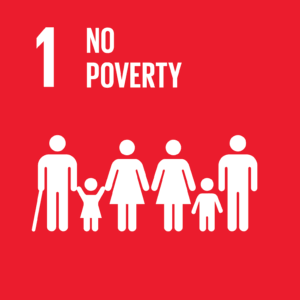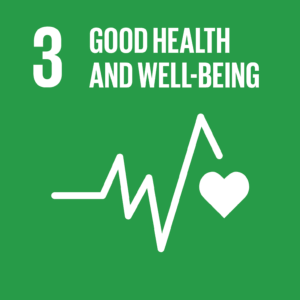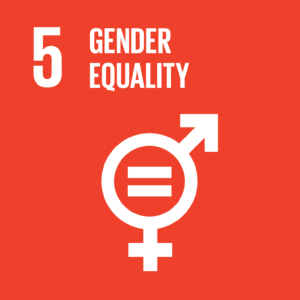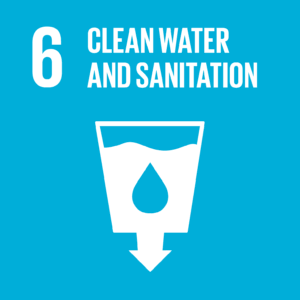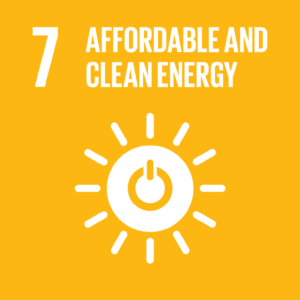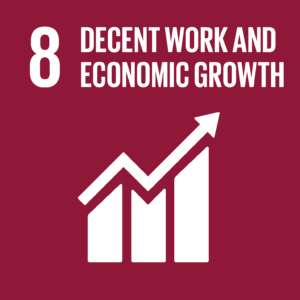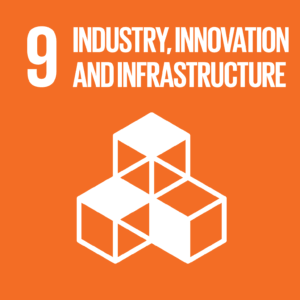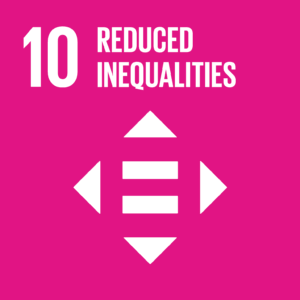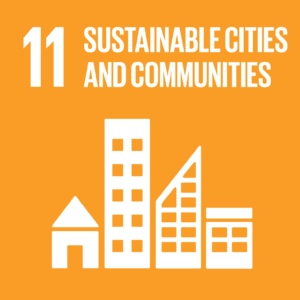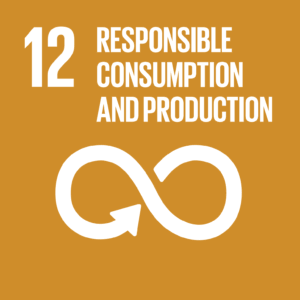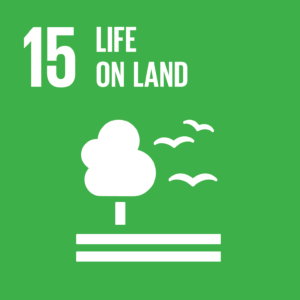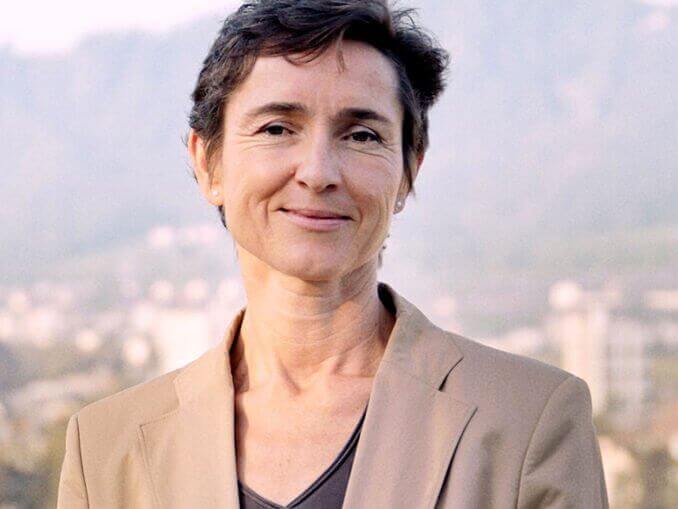
Cities must become more sustainable. Population growth, urbanization and an aging population are megatrends that also affect Switzerland – and give SDG 11 a high degree of urgency in this country as well. Thus, sub-target 11.b should already be achieved by 2020. Included in this sub-goal are the development of integrated policies and plans to promote resource efficiency and mitigate climate change. According to the UN, by early 2021, 156 countries and territories had developed urban development policies. Promoting resource efficiency and climate-neutral, or even climate-positive, development approaches requires not only integrated policies and plans, but also innovative approaches to solutions. In addition to cities, this also places obligations on the construction industry and the real estate sector.
Cities must become more sustainable. Population growth, urbanization and an aging population are megatrends that also affect Switzerland – and give SDG 11 a high degree of urgency in this country as well. Thus, sub-target 11.b should already be achieved by 2020.
This article about the construction industry and real estate sector in Switzerland is supported by

Included in this sub-goal are the development of integrated policies and plans to promote resource efficiency and mitigate climate change. According to the UN, 156 countries and territories had developed urban development policies by the start of 2021. Promoting resource efficiency and climate-neutral or even climate-positive development approaches requires not only integrated policies and plans, but also innovative solutions. In addition to cities, this also places obligations on the construction industry and the real estate sector.
Business Sustainability Today spoke to Prof. Dr. Susanne Kytzia, Head of the Institute for Building and Environment (IBU) at the University of Applied Sciences of Eastern Switzerland, about SDG 11 and the role of the construction industry and the real estate sector in achieving this goal.
Business Sustainability Today:
To what extent can and must the construction industry (here: construction companies and the building materials industry) and the real estate sector (in the areas of construction and disposal), contribute to achieving SDG 11? Especially in terms of resource efficiency, mitigating climate change, and increasing resilience.Susanne Kytzia:
The construction industry can and must of course play a pioneering role in achieving SDG 11, namely in the areas of value preservation and renewal, innovation as well as the circular economy:Firstly, in maintaining and renewing the value of cities and settlements: Building material companies such as brickworks have certain experience with a building material as well as the corresponding technical expertise and can become involved in the areas of renovation, maintenance and repair. The question that arises: How can reframing be achieved? Instead of a revenue orientation with cubic yards of building material sold, companies should adopt a service orientation that uses fewer building materials and focuses on preservation and expertise in remediation.
Secondly, with regard to innovation: in the field of innovation, building materials with certain characteristics are needed to enable the construction of a sustainable settlement. These can be energy properties, including storage capacity (brick or concrete) or insulating properties (insulating materials made from biomass), but also special features that can contribute to extending the service life of buildings, for example to protect against fire/earthquakes (such as concrete), or to increase the usable floor space by extending/adding storeys (especially wood).
Thirdly, with a view to a circular economy: the industry must position itself with regard to SDG 11 in such a way that resource management around bulk materials is supported. Individual companies do this well and are also economically successful, such as the Eberhard company. At the moment, you have the bigger margins on the disposal side – especially if pollutants are produced during dismantling. In the medium and long term, however, these companies should also benefit increasingly from the use of secondary construction materials from demolition.
The greater leverage lies with the real estate industry. Real estate owners decide in which direction the development of the real estate portfolio goes, especially in the area of renovation and replacement construction. With each renovation, building codes make properties more energy efficient, so cities and developments inevitably become more energy efficient. However, renovations are not happening fast enough in terms of climate and climate protection.
Business Sustainability Today:
Our “Focused Reporting” analysis of 150 Swiss sustainability reports shows that construction and suppliers are among the top 3 sectors when it comes to impact-oriented goal setting.Slightly less than half of the companies analyzed in this sector set smart and impact-oriented targets (44%). The real estate sector, on the other hand, shows a need to catch up: Here, the current figure is only 10%. What do you think could be the reason for that? And how can the construction industry and the real estate sector be motivated to set both SMART and impact-oriented goals and to implement them with innovative measures?
Susanne Kytzia:
Many companies in these industries set impact-oriented operating energy targets. For managers of owner-occupied real estate, it makes sense to set impact-oriented goals because these are also grateful goals: You can only get better. However, real estate developers with subsequent sales intentions are less interested in operating energy. They build to the standard required by building law, unless the market demands higher standards such as Minergie-ECO. For property owners who rent out their properties, the main question is who will finance the investments or renovations.They do not benefit directly from energy efficiency gains, as heating costs can be passed on to tenants as service charges. Only in recent years has there been the possibility of passing on the costs of energy refurbishment as “value-enhancing investments” through rent increases. This creates an incentive for the real estate sector to renew the building stock in terms of energy efficiency. However, we are currently seeing a rollback in the Tenant Protection Association to counteract further rent increases in cities.
In terms of renovations, cooperatives are considered pioneers in the industry. No one redevelops as much as these. In contrast, a large proportion of private owners are sitting on a still rentable building stock where refurbishment is not required by law, and are skimming off the top because such old buildings can be rented for the same or even higher price.
Business Sustainability Today:
Are the construction industry’s smart and impact goals enough to achieve SDG 11? And if not, what issues must also be considered to achieve this goal?Susanne Kytzia:
In our NRP73 Co-Creation Lab “Sustainable Housing and Construction” we are working on strategies to reduce housing needs. I am convinced that this is and will be one of the central issues for Switzerland in the next 20 to 30 years.We are challenged to address limited land as well as a demographically changing population, and to be more inclusive of other social concerns. Accordingly, we must be able to care for our ageing population in such a way that they do not become isolated. In addition, a sustainable settlement is also one in which there is affordable, socially acceptable housing. And these are not single-family housing estates with large houses where elderly people are visited once a day by Spitex, which is then the only social contact they still have.
Business Sustainability Today:
What groundbreaking examples do you know of that contribute significantly to resource efficiency and climate change mitigation? And what can other industries learn from the construction industry?Susanne Kytzia:
Unfortunately, it is the housing cooperatives that serve as role models. Regrettably, because cooperatives are a niche market with a barely scalable approach. The assumption that the whole of Switzerland will live in housing cooperatives misses the reality – that is neither intentional nor particularly sensible.I think the bottom-up approach of some cooperatives is particularly interesting, for example the multi-generation house Giesserei in Winterthur, which built and financed itself.
On the open real estate market, such projects are rarely seen, as they require returns in order to attract an investor. One solution could be alternative financing methods in which pension funds waive part of the return, provided it is a stable investment. Cities can also allocate parcels of land under building rights, thus creating a certain cost advantage, which in turn has a positive impact on the return on investment while contributing to sustainable development.
One promising development in the real estate industry is the changing consumer preferences during coronavirus with regard to shared spaces. The offer of shared spaces, which could be rented for short periods as home offices, was due to a certain need on the part of employees. On the other hand, vacancies have arisen in the “normal” offices and are likely to remain, as not all employees will return to the office. Targeted demand has therefore encouraged a certain type of supply here. If something like this were to exist in the residential sector as well, it would of course have a very positive impact on a resource-efficient supply. This could also call for social, affordable housing for an ageing population.
Business Sustainability Today:
The latest research, in which you are also involved, shows that a shift to a circular economy is difficult at the regional level. Can you explain in more detail how such a changeover works and what makes it so difficult?Susanne Kytzia:
Today, we do not differentiate enough between waste management services that promote the circular economy and those that do not. An illustrative example is construction and demolition waste, which can either be landfilled or reused as building material. If you can make the same amount of money from both services, that reduces the incentive to switch to circular economy. Another problem is that the more expensive the fees for landfills become, the more the income of the landowners who make the land available for landfilling increases.In addition, we have found in our research results that even if waste disposal costs become more expensive, they can still be recovered because the major added value is in the construction process.
In short, this means that such a system lends itself relatively poorly to economic incentives. Thus, to achieve SDG 11, stronger incentives must be created for recycling rather than disposal.
I have to add, though, that the longer I think about it, I’m not sure that the circular economy is really the solution to everything in this sector. For a long time, I was convinced that the right way was through replacement construction and energy renewal. Since these are long-lived assets and cycles are designed for long periods of time, it might be more sustainable to invest in permanence – that is, tear down less and rehabilitate more. As a result, there would be less material in the cycle and a circular economy would become correspondingly less important.

